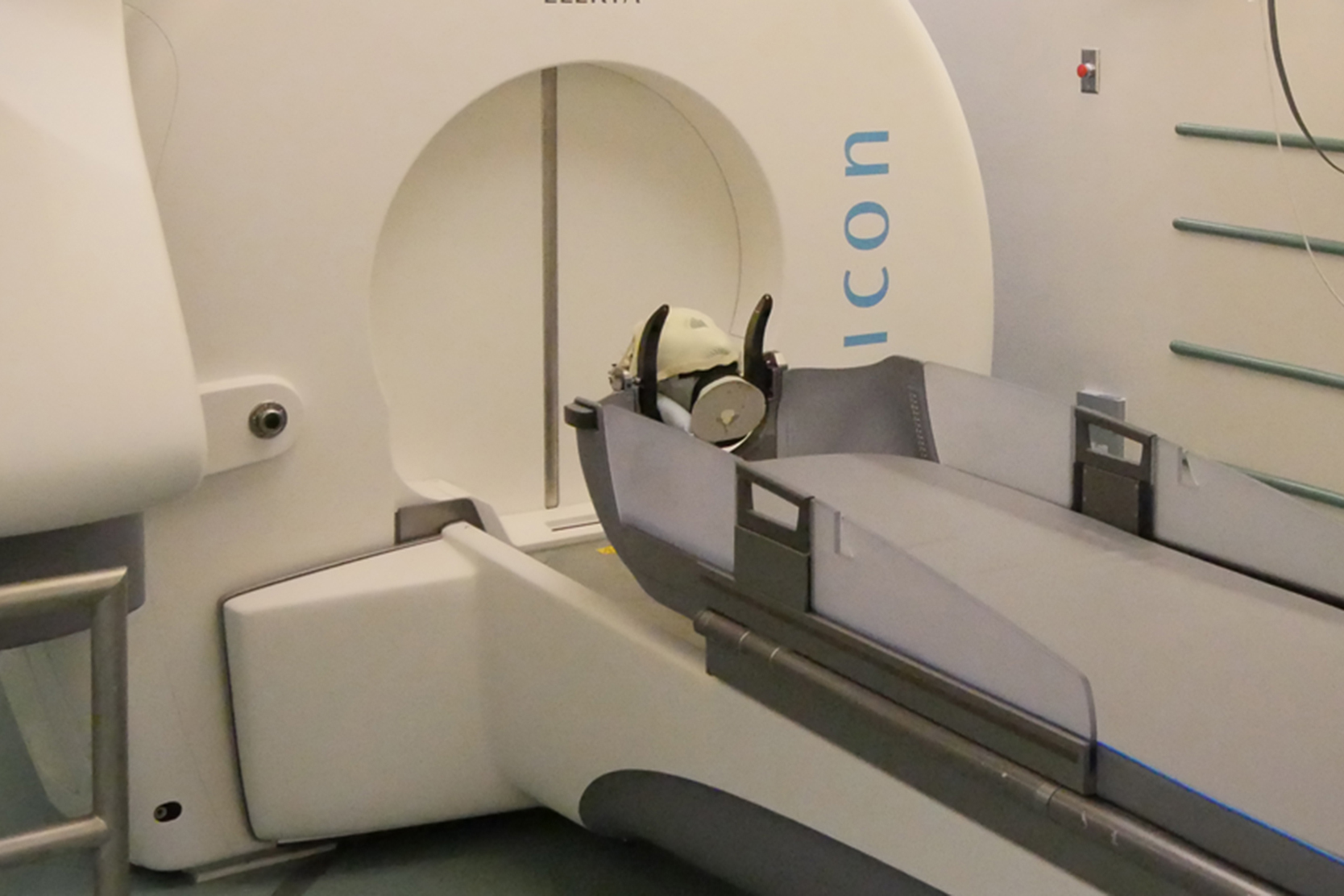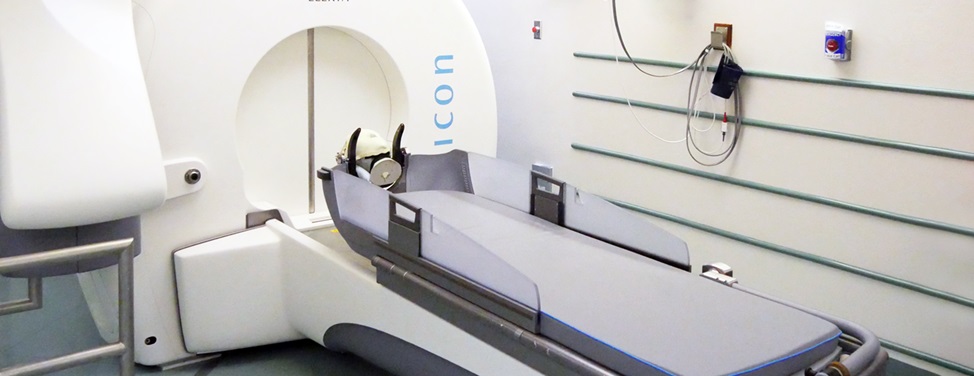The Gamma Knife is an advanced radiation treatment for small- to medium-size brain tumors, abnormal blood vessel growths called arteriovenous malformations and other neurological conditions.
Despite the name, Gamma Knife isn't a knife but a machine that delivers a single high dose of radiation directly to its target, with such precision that it causes little to no damage to surrounding tissue. Abnormalities measuring no larger than 1 to 2 inches inches in diameter – the size of a pebble – can be treated with the Gamma Knife. And it's a noninvasive procedure, so patients with serious disorders can be treated in one day without the need for a hospital stay.
When UCSF launched its Gamma Knife Radiosurgery Program in 1991, we became the first medical center in Northern California to offer this option for patients with brain disorders. Since then, we have treated more than 3,000 patients, including children, using this state-of-the-art technology. Using the newest version of the Gamma Knife, we are able to deliver the most precise treatment possible along with improved patient comfort and treatment efficiency. This machine allows neurosurgeons to treat more areas of the head and neck, and they can target multiple areas in one session, without needing to move patients or adjust settings. Patients spend less time undergoing treatment and experience minimal discomfort.
Gamma Knife's pinpoint radiation delivery is made possible through a technique called stereotaxy. Imaging methods such as CT scans, MRI and angiography (an X-ray technique for blood vessels) are used with special computer-assisted instruments to create three-dimensional views of the target and surrounding brain structures. By studying these images, doctors can accurately locate an abnormality within the brain, then focus the radiation beams exactly on it.
Evaluation
Conditions that can be treated effectively with the Gamma Knife include:
- Benign (noncancerous) slow-growing brain tumors that don't tend to invade surrounding tissues, such as meningiomas, acoustic neuromas, pituitary adenomas, craniopharyngiomas and low-grade astrocytomas
- Primary or recurrent malignant (cancerous) brain tumors, including glioblastomas and anaplastic astrocytomas
- Solitary and multiple brain metastases (cancerous growths that develop as a result of cancer elsewhere in the body)
- Arteriovenous malformations
- Some cases of epilepsy
Candidates for Gamma Knife treatment are evaluated by a team that includes experienced neurosurgeons, radiation oncologists, neurointerventional radiologists, neuro-oncologists, specially trained nurses and radiation therapists. Factors taken into consideration include age and general health, location and size of the abnormality, and previous treatments.
Some conditions may be treated with another noninvasive radiosurgery method called the CyberKnife. This system uses a robotic arm to deliver highly focused beams of radiation. Specialists at UCSF Benioff Children's Hospitals are using the CyberKnife in areas of the body – such as the spine and spinal cord – that can't be treated by other radiosurgery techniques.
If your child receives care at UCSF, your child's referring doctor plays an important role in developing the treatment plan. During our evaluation process, we consult your child's doctor to ensure that all variables affecting the therapy are taken into consideration. During your stay with us, we keep your child's doctor informed on your child's progress, assuring continuity and coordination of care.
Procedure
If Gamma Knife treatment is scheduled, you and your child will check into our program early in the morning. An IV line will be placed for administering anesthesia, and an anesthesiologist specializing in neurosurgery will start the anesthesia and monitor your child during the procedure. Children are completely asleep throughout the procedure.
The neurosurgeon will attach a "stereotactic frame" to your child's head. This is a lightweight metal frame that holds the head in place and serves as a point of reference for focusing the radiation beams. The next step is brain imaging that enables the doctors to define the treatment target. A Gamma Knife treatment plan will be developed with the help of sophisticated computer software.
During the treatment itself, your child will lie on a special couch while 192 fine radiation beams are focused simultaneously at the target. The focal spot's size can be adjusted, and multiple focal spots can be combined to deliver a high radiation dose to a single target or multiple targets of almost any shape, anywhere in the brain.
The principles of Gamma Knife treatment for children are the same as those for adults, but special care is taken, including imaging studies before the procedure and anesthesia tailored for children. With this treatment, radiation exposure to other parts of the body is extremely low, making it an excellent option for children as well as women of childbearing age.

































